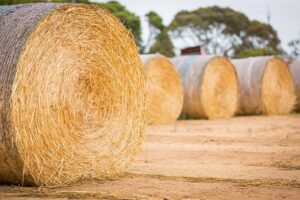Baling Twine: Choosing Baling Twine for Your Hay Production Needs
Farmers frequently use twine to secure hay bales. When selecting twine for use with producing hay, it is important that it meets your production needs.
Loose twine can be dangerous to horses and damage farm machinery, so it’s crucial that it’s picked up around fields and stalls to keep horses safe. Picking up twine also provides benefits to wildlife such as Osprey; getting caught in it may cause them to lose a wing or toe and starve!
Polypropylene
 When selecting hay baling twine for baling hay or straw bales, select an effective material to ensure high quality and efficient use. Sisal or synthetic twine work effectively but it’s essential to consider factors like forage needs, baling equipment specifications and storage plans when making this choice.
When selecting hay baling twine for baling hay or straw bales, select an effective material to ensure high quality and efficient use. Sisal or synthetic twine work effectively but it’s essential to consider factors like forage needs, baling equipment specifications and storage plans when making this choice.
Polypropylene baling twine is an ideal choice for tying straw and hay bales together, offering high strength, press density, resistance to rot, mildew and UV exposure protection, durability against machine wear and coming in an assortment of colours which makes running through your baling machine effortless.
Prior to purchasing twine for baling purposes, check its guaranteed feet per carton to make sure you can meet production without needing to reload containers too often – this will reduce overall bale costs. In addition, opt for knotting-resistant twine that won’t break during baling so as to maximise production efficiency and quality while optimising production efficiency and quality outputs.
Natural
Natural baling twine is an excellent option for farmers looking to reduce their environmental footprint. Made of biodegradable material, natural twine biodegrades quickly without contributing to landfill waste or clogging sewers; unlike synthetic twine it won’t damage equipment or gum up machinery either! Plus, it comes in different weight options suitable for various farming scenarios.
Selecting an effective binding for hay bales can make them more stable and simpler to stack. There are various methods of binding available – twine, net wrap or wire binding have each their own set of benefits and drawbacks.
Hay baling twine is most often used to secure round hay or straw bales together, but its uses extend far beyond this. Horse owners, for instance, often utilise this material at horse shows and horse stalls to hang ribbons or loop blankets over barred stalls. When properly stored it also prevents hay from rotting during transportation or being lost altogether.
Recycled
As with other plastics, baling twine does not break down quickly in its environment, leaving behind harmful environmental impacts like entangling wildlife or damaging equipment. Furthermore, twine can pose physical threats to livestock or humans when consumed or handled improperly.
While many farmers discard their twine after use, some have taken the initiative to recycle it instead – helping reduce polypropylene baling twine ending up in landfills while simultaneously decreasing how much waste needs to be burned for energy purposes and producing harmful emissions into the atmosphere.
Recycled twine is made up of polypropylene and other recycled materials, offering farmers a cheaper alternative to natural sisal or jute twine while also helping the environment. Four Corners Back Country Horsemen and Alberta Ag Plastic both have baling twine collection stations which make recycling this type of twine convenient and hassle-free.
Colours
Modern baling twine comes in various colours to help track individual paddocks, fields and cutting crews – as well as total annual production – of hay. Additionally, using different coloured twine can quickly make halters for horses, cows or goats that break off in an emergency.
Orange poly hay baling twine is the preferred twine choice for baling hay. This thick twine is strong, rot resistant and UV protected to extend its lifespan, as well as being suitable for round bales due to its high-speed capabilities and strong 90 lb. tensile strength that resists machine wear and rodent damage.
There is a wide range of twine sizes and strengths available, and selecting the appropriate twine will increase productivity in your field while protecting hay quality, feed value, herd health and herd welfare. Weather and timing play a big part in how good your hay turns out – make sure that you choose twine that matches these conditions!
Comments are Disabled